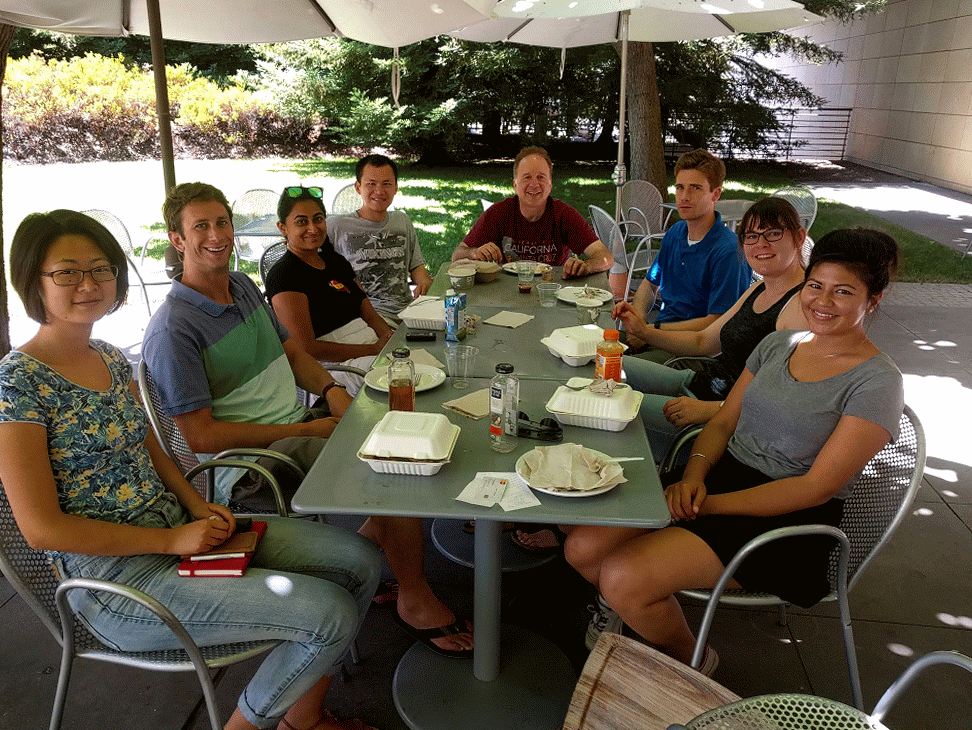My postdocs and I are having a discussion about how to be more efficient in producing high-impact papers in quality peer-reviewed journals. I sent the steps in my preferred process to them, which are repeated below.

Photo by Jess Barker
Steps are similar for the observationally-based work we do. The main difference is that obtaining additional observations is usually much harder than performing additional model simulations.
Steps to writing a scientific paper
1. Play until you stumble on something of interest. Obtain initially promising results. Alternatively, think about what paper people would find useful that you could write but has not yet been written.
2. Write a provisional draft abstract for the proposed paper. This defines the problem, the scope of work, the expected results, and why it is important or interesting. What is the main point of the study and why should anyone care? This is a good time to start thinking about the target journal.
3. Write the introduction of the proposed paper. This forces you to do a literature review and understand what else is out there. It also forces you to write up the problem statement while you still think the problem is important. Usually, by the end of the study, the result seems trivial and obvious, and the problem unimportant.
4. Do additional simulations, measurements, analyses, etc, needed to test out the basic hypothesis and produce data for tables and figures. Attempt to get enough of a mechanistic understanding so that the central result starts to seem trivial and obvious.
5. Create rough drafts of figures. Make an abundance of figures, assuming that some will be in the main paper, some in the supporting material, some for talks, and some not used at all. Make preliminary decision of what figures will be in the main paper.
6. Write first draft of paper around figures. Do this before iterating on figure improvement. The standard outline is: Abstract, Introduction, Methods, Results, Discussion, Conclusions. The Results section should describe the results produced by the model. Usually, the Discussion section should discuss the relevance of those model results to the real world. Sometimes, the exposition is smoother if results in a sequence are each in turn presented and then discussed. This is OK if care is taken to be clear about when you are referring the model and when you are referring to the real world.
7. Write figure captions. Figure captions are often among the parts of the paper read by the broadest audience. Place in figure caption a one sentence statement of the main point you expect the reader to derive from looking at the figure. Sometimes editors pull this sentence out, but they often leave it in. In any case, you should understand the main point of each figure.
8. Iterate improvement of the draft of the paper and main paper figures until the process starts to asymptote. Do additional simulations and make additional figures as necessary. Take care to make your figures beautiful. Beautiful figures not only communicate scientific content well to a broad audience, but also communicate that you care about your work and strive for a high level of excellence. Consider target journal guidelines and what should go in the supporting material and what should be in the main body of the paper.
9. Wherever possible, replace jargon and acronyms with ordinary English. Insofar as it is possible, improve felicity of expression. Write good prose. This is especially important in the abstract, first and last paragraphs, and figure captions.
10. Before submission, double check that the main story of the paper can be obtained by reading (1) the abstract, (2) the first paragraph, (3) the last paragraph, and (4) the figure captions. This is already more than what most ‘readers’ of your paper will actually read. Only experts will read the entire paper. Most readers will just want the idea of the paper and the basic results.
11. Make sure all codes, intermediate data, etc, are packaged up in a single directory. This is done both to facilitate making modifications later, and also so as to provide maximum transparency into and reproducibility of the scientific process.
12. Write cover letter to editor and submit. Stress the new finding and to whom this finding will be of interest. Suggest knowledgeable reviewers who you have not collaborated with recently. If you have written papers on related topics, people who have cited your previous papers would be good candidate reviewers.
Key is to have rough figures and a rough draft on paper early. It is much easier to improve existing text and figures than to start with a blank page.
Also key is recognizing when your manuscript is beginning to asymptote. A sloppy error-filled manuscript will give reviewers the feeling that your work is sloppy. However, perfectionism can mean low productivity. Striking the correct balance is hard.
Another thing is to do Step One 20 times. If you have 20 ideas for papers you can pick the best one. If you have only one idea, it is unlikely to be a great idea. People who have only one idea at a time tend to write papers that are footnotes to their previous papers, and then have careers that descend into meaningless detail that nobody cares about.
You might also want to take a look at this advice on writing scientific papers from George M. Whitesides, and this advice on the 5 most pivotal paragraphs in a scientific paper by Brian McGill.
